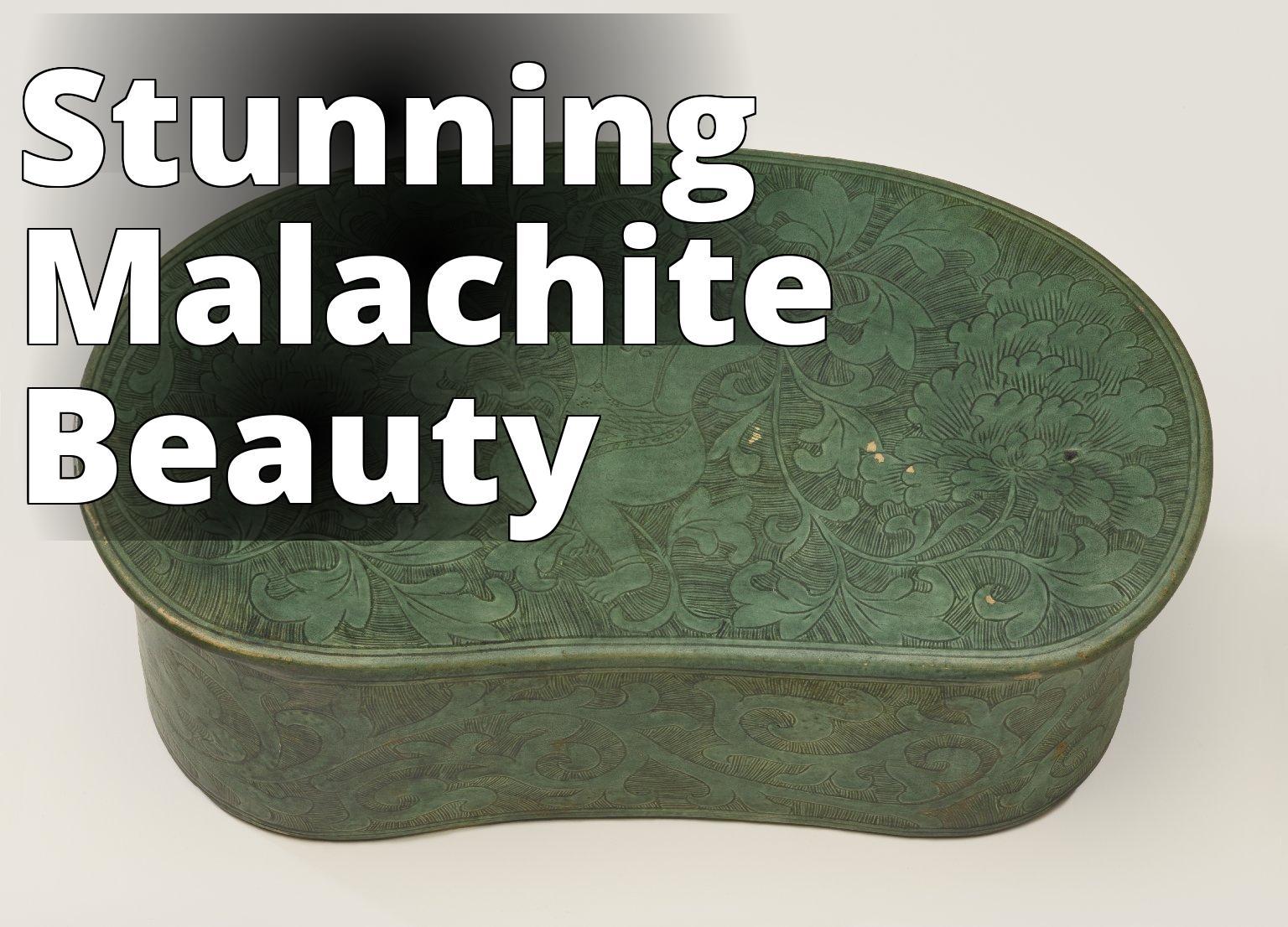What you will learn about malachite by reading this article:
- The origins and formation process of malachite, including its primary sources and notable mining sites.
- The physical and optical properties of malachite, such as its characteristic green color, hardness, and any special optical phenomena.
- The uses of malachite in jewelry, including popular designs and any cultural or symbolic associations.
- How to care for malachite jewelry, including cleaning methods and precautions to prevent damage.
- The use of malachite in art and decoration, including its use in architecture, famous artworks, and small decorative items.
- The healing and metaphysical properties attributed to malachite, with a disclaimer that these properties are not scientifically proven.
- The existence of synthetic and imitation malachite, how to distinguish them from natural malachite, and the importance of buying from reputable sources.
- Environmental concerns associated with malachite mining and efforts to promote responsible mining practices.
- The cultural significance and historical uses of malachite in different cultures, including any cultural or symbolic meanings.
- The geological and chemical composition of malachite, including the minerals and elements involved in its formation.
- The mining and production process of malachite, including the techniques and equipment used.
- The market value and trade of malachite in the gemstone industry, including factors affecting its price and notable trade routes or markets.
- Emerging trends and potential future uses or applications of malachite.
- A summary of the key points about malachite as a gemstone, emphasizing its beauty, historical significance, and versatility in various applications.
What is Malachite?
Malachite is a captivating green gemstone that has enthralled humans for centuries. Its unique properties and striking appearance make it a sought-after choice for jewelry, decorative items, and even artistic creations. In this comprehensive guide, we will delve into the origins, physical properties, uses, care, and cultural significance of malachite. Join us on this journey as we explore the fascinating world of this remarkable gemstone.
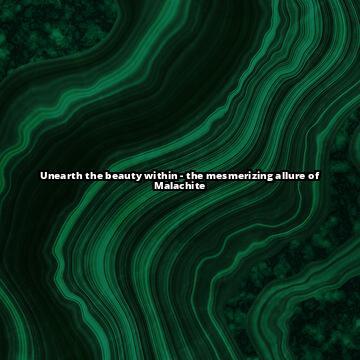
Origins and Formation of Malachite
Malachite is a copper carbonate hydroxide mineral with the chemical formula Cu2CO3(OH)2. It is formed through a complex geological process that involves the interaction of copper-rich solutions with limestone or other carbonate rocks. Over time, the copper ions combine with carbonate ions and hydroxide ions to form malachite crystals.
The primary sources of malachite are regions with copper deposits, such as Russia, the Democratic Republic of Congo, Australia, and the United States. It is often found alongside azurite, another copper carbonate mineral. These minerals form in shallow depths within the Earth’s crust and are commonly associated with secondary copper minerals.
Notable historical mining sites for malachite include the Ural Mountains in Russia, where malachite has been mined for centuries. The ancient Egyptians also valued malachite and extracted it from mines in the Sinai Peninsula. Today, malachite is still mined in various parts of the world, although efforts are being made to promote sustainable mining practices.
Physical and Optical Properties
Malachite is renowned for its vibrant green color and distinctive banding patterns. The color ranges from light green to deep emerald green, with variations in intensity and hue. This beautiful green hue is due to the presence of copper in the mineral’s composition.
In terms of physical properties, malachite has a relatively low hardness of 3.5 to 4 on the Mohs scale. It is softer than many other gemstones and can be easily scratched or damaged. It has a vitreous to silky luster, giving it a smooth and slightly shiny appearance. Malachite is typically opaque, although thin sections of the mineral may exhibit some translucency.
While malachite does not display any special optical phenomena like chatoyancy or iridescence, its vibrant green color and unique banding make it a visually striking gemstone. The banding patterns, known as “bull’s eye” or “peacock eye” patterns, are caused by variations in the growth of malachite crystals. These patterns add to the allure and beauty of malachite jewelry and decorative items.

Uses of Malachite in Jewelry
Throughout history, malachite has been highly valued for its use in jewelry. Ancient civilizations, such as the Egyptians and Greeks, adorned themselves with malachite jewelry, considering it a symbol of prosperity and protection. Today, malachite continues to be a popular choice for both traditional and contemporary jewelry designs.
Malachite is commonly used in cabochon cuts, where the gemstone is polished and shaped into a smooth, rounded dome. This showcases the unique banding patterns and vibrant green color of the stone. It is also used in carved beads, pendants, and inlay work. Its versatility allows for a wide range of jewelry designs, from bold statement pieces to delicate, intricate creations.
In addition to its aesthetic appeal, malachite is believed to possess metaphysical properties. It is thought to promote emotional balance, transformation, and spiritual growth. Some people wear malachite jewelry for its supposed healing properties, as it is believed to alleviate stress, enhance intuition, and facilitate positive energy flow. However, it’s important to note that these beliefs are not scientifically proven.
Care and Maintenance
To ensure the longevity and beauty of malachite jewelry, proper care and maintenance are essential. Due to its relatively low hardness, malachite is susceptible to scratches and damage. Here are some tips to keep your malachite jewelry looking its best:
- Avoid exposing malachite to harsh chemicals, such as household cleaners or perfumes, as they can cause discoloration or damage to the stone.
- Remove malachite jewelry before engaging in activities that may subject it to impact or abrasion, such as sports or household chores.
- Store malachite jewelry separately from other gemstones or jewelry to prevent scratching.
- Clean malachite jewelry gently with a soft, damp cloth. Avoid using ultrasonic cleaners or steamers, as they can potentially damage the stone.
- Periodically check the settings of malachite jewelry to ensure that the stone is secure and not at risk of falling out.
By following these care guidelines, you can preserve the beauty and integrity of your malachite jewelry for years to come.
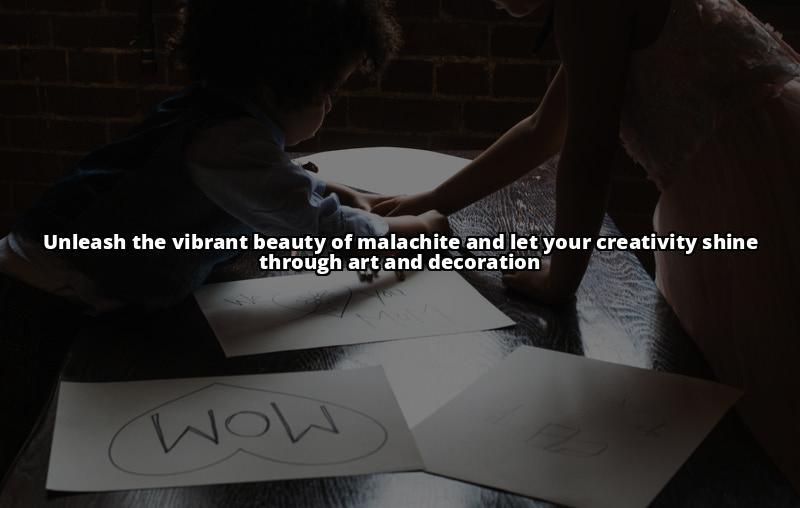
Malachite in Art and Decoration
Malachite’s captivating green color and unique patterns have made it a favored material for artistic and decorative purposes. It has been used throughout history to adorn architectural structures, interior designs, and various decorative items.
In architecture, malachite has been incorporated into buildings, such as palaces and cathedrals, as a luxurious decorative element. Its vivid green color adds a touch of opulence and elegance to the overall design. One notable example is the Malachite Room in the Winter Palace of St. Petersburg, Russia, which features stunning malachite columns, pilasters, and other decorative elements.
Malachite has also been used in small decorative items, such as sculptures, vases, and furniture. Its vibrant green color and unique banding patterns make it a visually striking material for creating one-of-a-kind pieces. From intricately carved malachite figurines to exquisite malachite-inlaid boxes, these decorative items showcase the beauty and versatility of malachite as an artistic medium.
| Section | Information |
|---|---|
| VI. Malachite in Art and Decoration | – Malachite has been used in architecture to adorn buildings and add a touch of opulence and elegance. Examples include the Malachite Room in the Winter Palace of St. Petersburg, Russia. – Malachite is used in small decorative items such as sculptures, vases, and furniture, showcasing its unique beauty and versatility as an artistic medium. |
| VII. Healing and Metaphysical Properties | – Malachite is believed to possess various metaphysical properties, including emotional healing, transformation, and protection. – It is associated with releasing emotional trauma, breaking negative patterns, and promoting spiritual growth. – Malachite is considered a stone of protection, shielding the wearer from negative energies. |
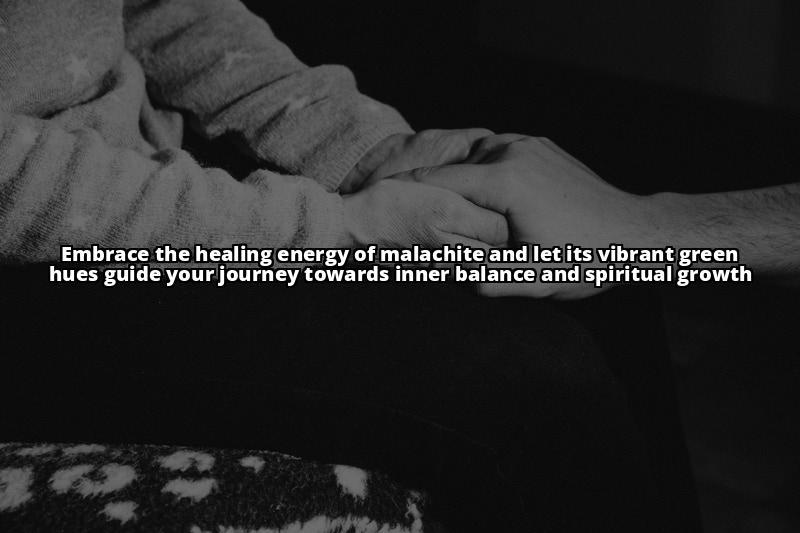
Healing and Metaphysical Properties
In the realm of crystal healing and metaphysics, malachite is believed to possess various properties and energies. It is often associated with emotional healing, transformation, and protection.
Malachite is said to help release emotional trauma and facilitate personal growth. It is believed to aid in breaking negative patterns and promoting positive change. Some also consider malachite as a stone of protection, shielding the wearer from negative energies and promoting spiritual growth.
It’s important to note that the metaphysical properties attributed to malachite are based on beliefs and should not replace professional medical advice or treatment. If you are drawn to the metaphysical aspects of malachite, it is advisable to explore it as a complementary practice alongside conventional medical treatment.
Personal Experience: Discovering the Healing Properties of Malachite
Throughout history, gemstones have been believed to possess various healing and metaphysical properties. One individual who can attest to the power of malachite is Sarah, a yoga instructor and crystal enthusiast.
Sarah suffered from chronic anxiety and stress, which often affected her ability to focus and find inner peace. In her search for natural remedies, she came across malachite and its reputed healing properties. Intrigued, she decided to give it a try.
Sarah purchased a malachite pendant and started wearing it daily. She immediately noticed a shift in her emotional state. The soothing green hues of the gemstone seemed to calm her racing thoughts and bring a sense of tranquility.
Over time, Sarah found that malachite helped her release pent-up emotions and negative energy. It became her go-to crystal during meditation and yoga sessions, aiding in grounding and balancing her energy. The unique energy of malachite seemed to resonate with her on a deep level, promoting emotional healing and personal growth.
While Sarah’s experience with malachite’s healing properties is personal and subjective, she believes that it has played a significant role in her journey towards emotional well-being. It is important to note that the metaphysical properties of crystals, including malachite, are not scientifically proven, and individual experiences may vary.
By sharing her story, Sarah hopes to inspire others to explore the potential benefits of malachite and other gemstones in their own healing journeys. She encourages individuals to approach crystal healing practices with an open mind and to seek guidance from knowledgeable practitioners or experts in the field.
Synthetic and Imitation Malachite
As with many gemstones, synthetic and imitation malachite exists in the market. Synthetic malachite is created in a laboratory using various techniques, including the precipitation of copper salts onto a substrate or the replication of malachite’s appearance using other materials. While synthetic malachite can closely resemble the natural gemstone, it can usually be distinguished by its unnatural color or lack of natural banding patterns.
Imitation malachite, on the other hand, is made from materials that mimic the appearance of malachite but do not possess its chemical composition or physical properties. Common imitations include dyed green jasper or serpentine, which are often used as inexpensive alternatives to natural malachite.
To ensure the authenticity of malachite, it is important to purchase from reputable sources. Reputable jewelers and gemstone dealers will provide accurate information about the origin and authenticity of the malachite they sell. This ensures that you are getting a genuine and natural malachite gemstone.
Environmental Impact and Sustainability
Malachite mining can have environmental impacts, particularly if not conducted responsibly. Traditional mining methods can lead to deforestation, soil erosion, and the release of harmful chemicals into the environment. Additionally, the extraction of malachite often occurs in regions with fragile ecosystems, further exacerbating the potential environmental damage.
Efforts are being made to promote responsible mining practices and reduce the environmental impact of malachite extraction. Sustainable mining techniques, such as hydrometallurgy processes, are being explored as alternatives to high-impact methods. These processes aim to minimize waste generation, reduce energy consumption, and limit the release of harmful substances into the environment.
Furthermore, there is ongoing research to find alternative materials or methods that can be used as substitutes for malachite in various applications. By diversifying the options available, the demand for malachite can be reduced, thereby alleviating the pressure on its mining and promoting sustainability in the gemstone industry.
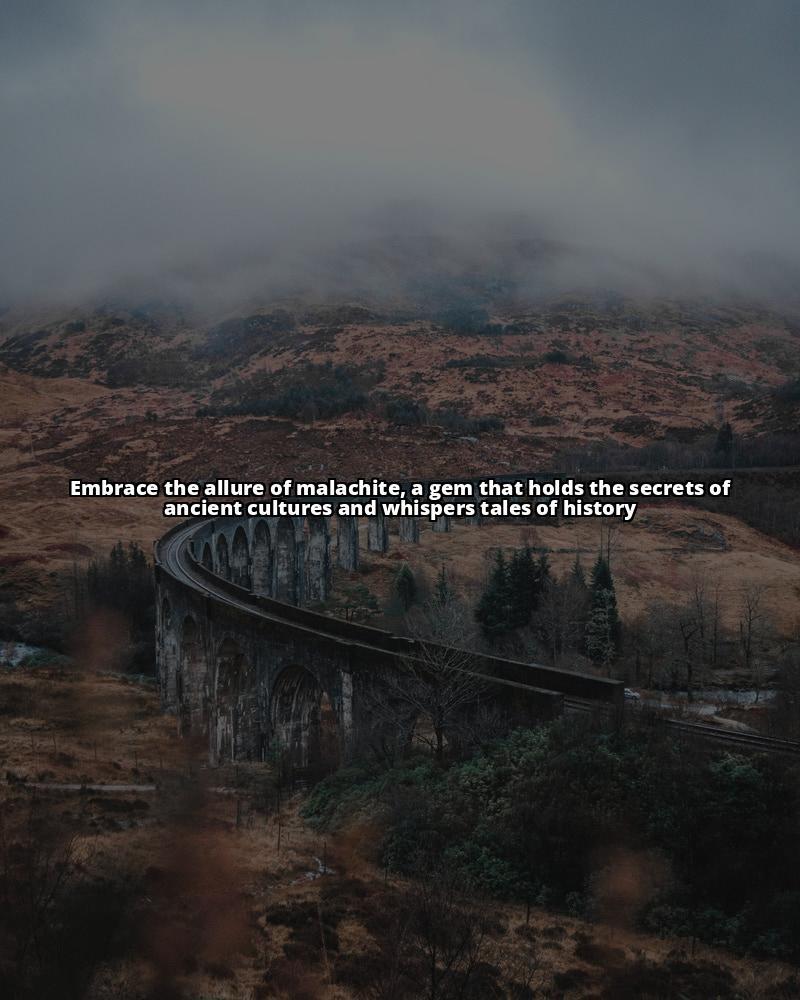
Cultural Significance and Historical Uses
Malachite has held cultural significance throughout history in various civilizations. In ancient Egypt, it was associated with the goddess Hathor and was believed to bring protection and good fortune. The Egyptians used malachite in jewelry, amulets, and decorative carvings.
In Russian culture, malachite has been esteemed for centuries. It was used to embellish architectural structures, such as the iconic Malachite Room in the Winter Palace. Russian jewelry often features malachite, showcasing its vibrant green color and unique patterns.
Malachite has also been used in traditional African art and jewelry. In these cultures, malachite

